Note: This post was written last year, pre-pandemic. Please be safe by wearing masks, keeping a distance from other people, and avoiding going out whenever possible. Many of the information in this article was designed for pre-pandemic conditions. If any section in this article violates safety guidelines, choose safety first.
Written by a UT super-senior (5th year). This post is being regularly updated with more info. Feel free to ask any questions in the comments section.
Table of Contents:
- Resources
- Electronics Resources
- Recreation
- Free for Students
- Libraries
- Other
- Try to Avoid
- Crime
- Other
- Food
- Everyday Food
- Eating Out
- Meals
- Dessert
- Cultural References and History
- General
- Violence
- Art Installations
- Statues
- Other Art
- Things to do around Austin
- Touristy Stuff
- Nightlife
- Daylife
- Housing
- Dorms
- Common Off-Campus Housing
- Jobs
- A Virtual Tour
- Logistics, Admissions, and Tuition
- Admissions
- Tuition
- Other Logistics
- Tips
1. Resources
Electronic Resources
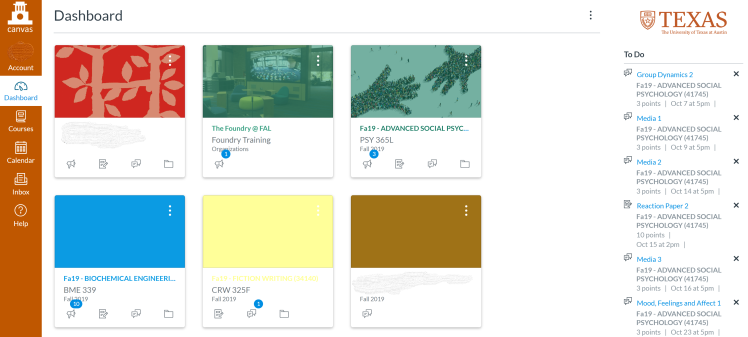
It occurs to me that not everyone is familiar with Canvas. Canvas will be required in nearly all of your classes and is quite a useful tool. Universities nowadays tend to use a standard posting location (like Canvas or, at some schools, Blackboard) where your professors will put up their syllabus, lecture PowerPoints, grades, practice exams, announcements, etc. It’s basically the central hub for all of your classes at UT. You can even go back through all of the classes you’ve ever taken using Canvas. Some professors are more skilled with Canvas than others. Some professors don’t use their Canvas site, and will instead post homeworks and such on their own personal websites. Some professors decide not to ever post any materials online. But no matter what, you will use Canvas extremely frequently while at UT. I recommend enabling Canvas’ automatic notification system to your email or your phone, as your professors will expect you to keep up with their important/last-minute announcements on here.
If you want to reach a professor, student, or staff member at UT by email or find out where their office is, UT has a nifty public directory for you to use.
If you need to go to the doctor’s for a yearly checkup, a physical, an injury, or stress, then UT actually has a great online appointment system with its MyUHS (University Health Services) portal. It’s super user-friendly and you can even use it to message your doctors pretty much anytime. I’ve actually been quite impressed with UT’s medical services, both online and in person.
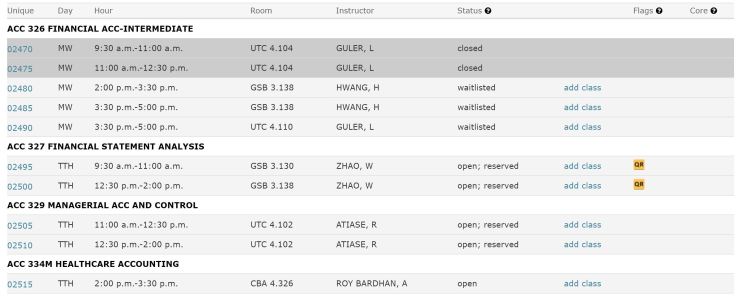
When picking classes, your most important resource will be the official course schedule page (where you can look up every course offered this semester, a brief description of its contents, its meeting time/professor, which flags it offers, and its requirements) and the UT Syllabi and CV website (where you can look up the syllabus for almost any class with any professor in any year). These syllabi will tell you the class’s workload, exam dates, expectations, cell phone policy, etc. When creating a four-year degree plan, be sure to use syllabi and course schedules from past semesters, as some classes are only offered in the spring, or only offered in the fall, or are only taught by one professor every other year, or have another weird pattern like that. The current course schedule does not have every class that will be offered in the near future. Note that the difference between “open” and “open; reserved” is that “reserved” classes are typically restricted to honors only, majors only, or some other extra requirement. To get into one of these classes without meeting the requirement, call up the department and request access to the class.
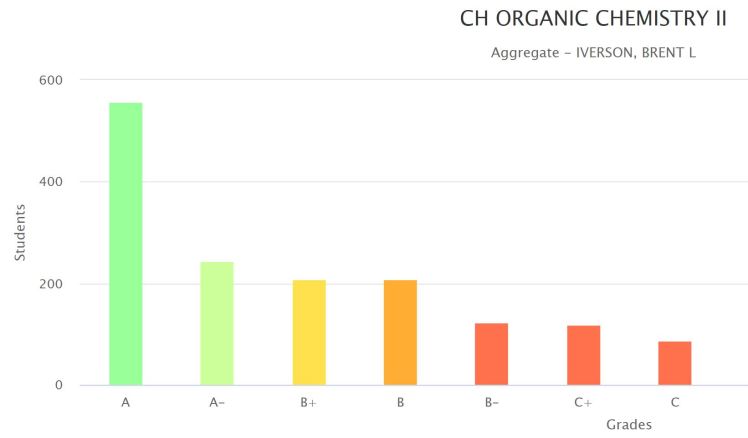
You can also look at CATALYST to see an estimated grade distribution from every professor’s class. UT professors are also rated by their students every semester, and you can find those results here at the Course Instructor Survey database.
Additionally, I should point out that good old RateMyProfessor.com is actually quite accurate. Yes, sometimes a disgruntled lazy student goes on there to rant about having too much work, but they’re typically easy to pick out. And a bad professor will still have a lower rating than a good professor. RateMyProfessor gives you more details than the Course Instructor Surveys and can show you how their teaching methods have changed over the years.
To sell things or buy for cheap (ex. textbooks, school supplies, furniture, clothes), use the UT Buy/Sell/Trade/Free Facebook page. It’s where I get 90% of my textbooks.
To stay informed about UT news, read the DailyTexanOnline or join the UT LONGmemes for HORNSy Teens Facebook page. These are both great sources for formal and informal news, respectively. No, I am not joking.
UT has an official clubs website called HornsLink. This is a good place to start looking for clubs to join, but many clubs don’t update their info. It’s a good idea to search Facebook for “UT Austin _____ Club/Chapter,” visit one of the Org Fairs, or just walk down Speedway at noon on a weekday.
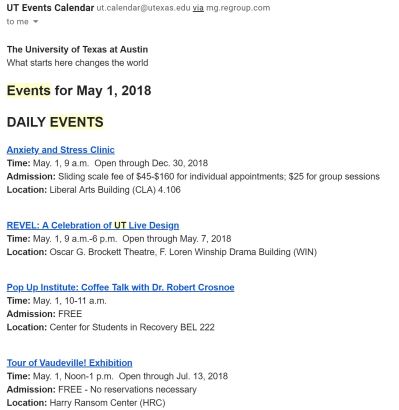
To find things to do around campus/in Austin, sign up for the official UT events calendar, a daily email newsletter that lists club meetings, seminars, free food, plays, research opportunities, job openings, etc. Additionally, check out the UT Austin Reddit page, the Austin 360 website, and/or The Austin Chronicle‘s website.
The UT Police Department’s timely notice warnings. You will automatically receive these and probably get sick of them, but they’re important to read if and when there are dangerous individuals on/near campus. They were implemented after the Harrison Brown/Kendrix White stabbing, because during that catastrophe none of us knew what was going on, what the perpetrators looked like, or how many there were. Now, UTPD tells you everything it knows immediately.
You have access to many scientific/literary journals if you re on UT wifi. These will become immensely important for research projects in all subjects. However, if you are not on campus, many journal databases will let you “log in through your institution” and get the articles for free using your UT EID. A faster way to do that is to copy-paste the following into the very front of the article’s url: “http://ezproxy.lib.utexas.edu/login?url= “. Keep that text in a virtual stickynote on your computer so you can quickly copy-paste it into your browser. Additionally, you can sign up for a free VPN through UT that will give you access to its resources even when you’re off-campus.
The freshman research initiative (FRI) list of labs and table of which lab credits you can claim from each lab. UT freshman can get their foot in the door with research starting in the spring by applying to FRI streams. How you get into each stream/what qualifications are necessary is a bit of a mystery. You’ll likely get in somewhere, but not necessarily your first choice. It’s like college apps within college!
If FRI isn’t your thing, you can also search for other research labs to join at any time during UT’s database Eureka. Just send a cold email to a professor you want to do research with, attaching a professional resume and explaining why you’re excited to work on one of their projects.

If instead of running studies you like participating in studies, you can find paid research opportunities using the research section of the UT events calendar. For other ways to find studies, see the “Jobs” section below.
The study abroad resources page. There will also be an in-person study abroad fair during the semester.
The UTDirect website hosts many common links used by students, such as a list of the classes you’re currently registered for, Workday (where you log in work hours if you have a job), the page for buying Bevo Bucks, and the Interactive Degree Audit 2.0 page.
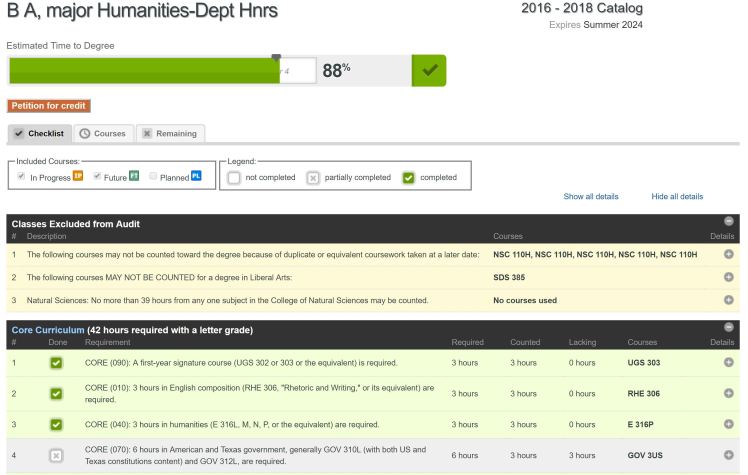
To check on which classes you still need to complete your degree plan, or see your completion percentage, go to UT’s Interactive Degree Audit 2.0 page under UTDirect. These are normally instantaneous to run and are what your advisers use to see what you’ve done so far.
UT has excellent wifi, but you have a data usage limit. You can buy more data per week and can look at your data usage here. If you run out of data, you can still get on the wifi, but it will be extremely slow.
UT Austin’s Statistical Handbook. UT is a public university, which means it needs to be transparent about the demographics of its students, the funding for every department, etc. These stats can be hard to find, but pretty much all of them are listed in this exhaustive Statistical Handbook from the Institutional Reporting, Research, and Information Systems.
You can view today’s menu at any UT dining hall before paying to get inside! This also works for non-buffets on campus. You can even look up the nutritional facts of individual dishes before or after eating:
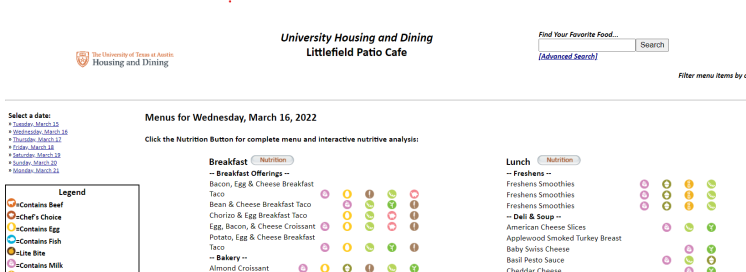
Recreation:
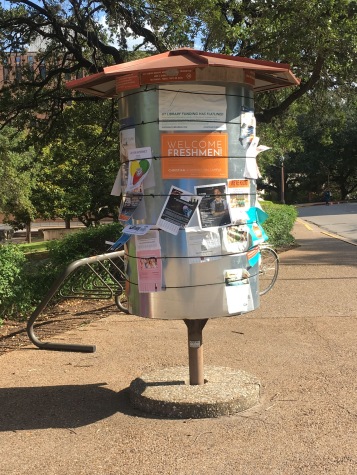
There are small “kiosks” (cylindrical bulletin boards) placed around campus (a full map here) where clubs and researchers advertise about meetings, events, and opportunities. These are good if you’re bored or looking to make money.
The student Union (UNB) has an underground bowling alley, pool tables, and a movie theater. The theater offers free movies every Thursday or so, sometimes with free food/prizes. These events are often advertised on the kiosks.
The Big Ticket and The Bass Pass (named after Bass Concert Hall) get you discounts on UT sports and theater, respectively. The Big Ticket is very generous, charging you $175 for full access to every on-campus sporting event for the entire year. The Bass Pass is less generous but still a good idea if you’re looking to see Broadway shows (a few are shown every semester at Bass Concert Hall) or other theatrical/musical productions.
The closest commercial movie theater to campus is the Bullock IMAX theater. The Bullock Museum covers Texas history, but has an adjoining theater that plays one movie at a time (normally the “biggest” film out at the time, like Avengers or The Lion King), has discounts for students, and doesn’t require museum entry.
Speaking of museums, you can get into all UT museums for free with your ID. Some popular ones are the Blankton Museum of Art, the Harry Ransom Center (photography, literature, etc.), the Bullock Texas History Museum, and the LBJ Library (political events in the 60s/70s and LBJ’s life).
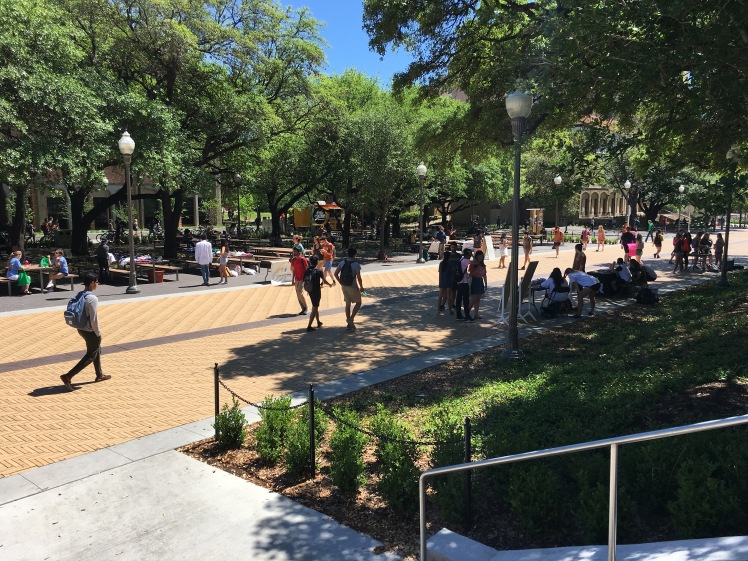
During the week days (especially around the beginning of the semester), walk down Speedway or West Mall (near the Union) to find clubs to join. The Christian clubs will often give you free granola bars if you talk to them. Other ways to join clubs are through HornsLink.com or, preferably, by going onto Facebook and searching for “UT Austin ____ Club/Chapter.”
The gyms are free as long as you’re taking classes, and they’re actually fantastic. You can check out any equipment with your ID (racquets, volleyballs, etc.). Gregory Gym has an indoor pool and two outdoor pools (lap and recreational), weight rooms, aerobics rooms, an indoor track, basketball courts, and volleyball courts, and a rock-climbing wall (which isn’t free unless they’re doing a promotional thing). There’s also the University Rec Center, which is near the stadium and has similar equipment. Additionally, there are a few workout rooms in the stadium itself. For outdoor sports like soccer, Frisbee, or beach volleyball, there are the UT Intramural Fields further north on Guadalupe.
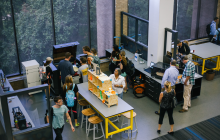
The Foundry is a new art workshop in the Fine Arts Library near the stadium. As long as you take a short training course, you can use their equipment: free 3D printers, a recording studio, sewing machines, a laser printer, a poster printer, and a VR studio. If you’re an engineering student, you can also use the UT Maker Space in the basement of the engineering building (by the Clock Knot on Dean Keaton) for 3D printing and laser cutting. However, I know from experience that at the door they only ask for your ID — they don’t explicitly check to make sure you’re an engineering student.
There are several Pokemon Go gyms around campus, and dozens of Pokestops.
Every dorm has a free piano for students to use outside of quiet hours. Most dorms require use of an ID keyed to that specific building to reach the pianos. However, the pianos in Carothers, Kinsolving, and Jester (near the J2 dining hall) will be easily accessible until about midnight, whether or not you live in the dorms.
The astronomy department often hosts “Star Parties” on the rooftop of PMA. They set up multiple telescopes pre-pointed at particularly interesting planets/stars, and they normally have free food and physics demonstrations — and occasionally liquid nitrogen ice cream.
If these aren’t enough for you, you can always sign up for the daily UT Events email newsletter, which lists club meetings, seminars, events, and job opportunities. For Austin events in general, check out Austin 360, The Austin Chronicle, or the Austin Reddit page. See the “Electronic Resources” section.
Every year, the frats and sororities have an event called “Roundup,” which I understand involves a lot of drinking and partying.
Keep an eye out for the yearly UT holiday events. Yes, there are things like free Christmas pancakes or finals season therapy dogs, but individual clubs also host celebrations for Chinese and Vietnamese New Year, Holi (the Indian paint throwing festival), Diwali (the Indian festival of lights), etc. The Hindu Student Association, as you can tell, is quite active.
Resources Free with your UT ID/As a Student:
Bus passes. Note: you have to signal the bus to stop. It will not stop on its own. It will drive you to the end of the line if you do not pull that chord/press that button. Use Google Maps to show you where all the possible stops are.
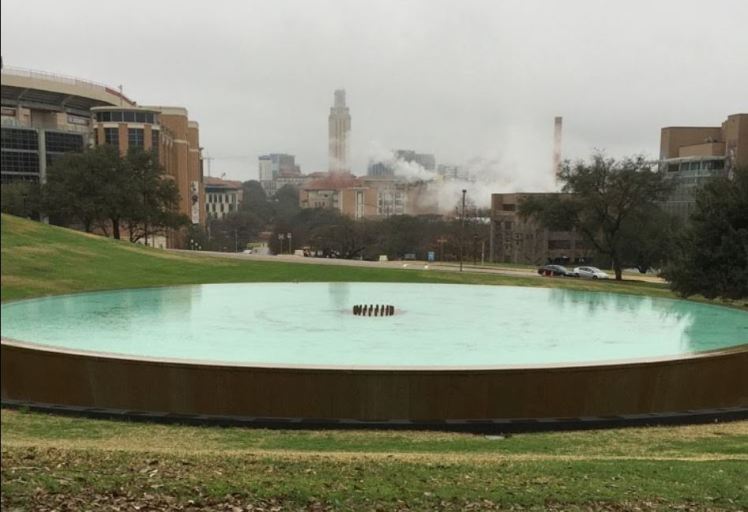
Free entry into nearby museums. Some popular ones are the Blankton Museum of Art, the Harry Ransom Center (photography, literature, etc.), the Bullock Texas History Museum, and the LBJ Library (political events in the 60s/70s and LBJ’s life).
The Foundry and Maker Space. As long as you take a short training course, you can use their equipment: free 3D printers (both), a recording studio (Foundry only), sewing machines (Foundry only), a laser printer (both), a poster printer (Foundry only), and a VR game studio (Foundry only). The Maker Space is only open to engineering students, but they never checked me when I snuck in.
UT libraries (see the Library section below).
The Sanger Learning Center, a tutoring center in Jester. You get a limited (but generous) number of free tutoring credits. The SLC is actually great, though some tutors are better than others. There’s also drop-in tutoring down the hall. Additionally, you can get paid to tutor here.
The University Writing Center on the first floor of the PCL. The Writing Center is very good for critiquing any piece of writing, from creative fiction to resumes to internship applications to class essays on the difference between normative and descriptive ethics. You can also get paid to work here.
Group therapy. After the Harrison Brown/Kendrix White stabbing, the university ramped up its mental health services. Personalized therapy still costs money, but group therapy (ex. for substance abuse, minority support groups, etc.) is free and unlimited.
Orange Bike Project, a workshop that fixes up old bikes and will fix up your bike, too (though they’ll make you do the work after some basic instructions). It’s free as long as you don’t need too many new parts. You can also rent bikes if you visit them in 27th street garage.
Six months of Student Prime through Amazon, complete with free 2-day delivery. However, they will automatically start charging you once the six months are up. Additionally, packages do sometimes get stolen in Austin if you live outside the dorms, so it’s a good idea to use the free Amazon pickup/dropoff center in Gregory Gym.
Pocket Points, an app that gives you coupons to local Austin shops if you don’t use your phone during class.
Laundry. Doing laundry in the dorms is now free.
Libraries — Quick Reviews and Tips:
Tip: Order the book you need on the library website. You can ask them to deliver it to any UT library on campus — so if the book you need is in PCL and you live in the Honors Quad, you can pick it up at a closer library.
Tip: The library computers are actually quite nice, and you only need your UT ID to access them. This is great if your computer is damaged or inaccessible.
Tip: Unless explicitly stated, the libraries are fine with you eating and drinking.
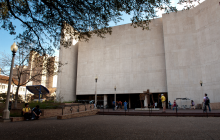
The Perry-Castañeda Library (PCL) is open nearly 24/7, has a coffee shop, and is where pretty much any books you’ll be checking out reside (since it’s the biggest library on campus, at a whopping five stories). the PCL may look ugly on the outside, but experienced UT students know that PCL is equally ugly on the inside. Except for the first floor STEM center and Writing Center. While ugly, PCL is a great place to find study spots, reserve study rooms, and vote when March/November comes around (if you go during dinnertime, there’s no line).
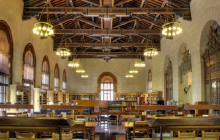
Battle Hall, one of the oldest buildings on campus and considered an “architectural marvel” holds (you guessed it) the Architecture library. The architecture library isn’t very big, but it’s the one that looks most like it belongs at Hogwarts. Note: no talking, food, or drinks here.
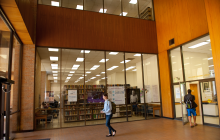
The PMA Physics, Math, and Astronomy library. Not much to look at, but it’s my favorite study-spot when I’m on north campus.
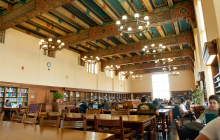
The Life Sciences library is on the second floor of the tower, and in my opinion is the most beautiful library. It’s not very big, but every inch of the space is painted or decorated in some manner. Plus, the tower provides an automatic alarm clock to tell you when you’re late for class.
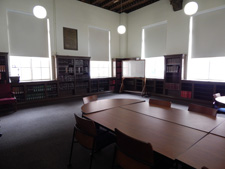
The Hidden Welch library. Welch Hall was open when I was a freshman, but now only holds research labs on one half while the educational half is being renovated. However, on the fourth floor of the research (24th street) side of the building, through a pair of large oak doors, is a cute little reading room we call the Hidden Library. It isn’t listed with the other libraries because you can’t check out books there, but it’s one of the best group study spots (so long as no one else beat you there).

The EERC library in the new engineering building. To compensate for how ugly the old engineering buildings were, the university decided to build the stunningly gorgeous EERC on the north side of Speedway. One floor down you’ll find a cozy little library with a few study rooms and white boards.
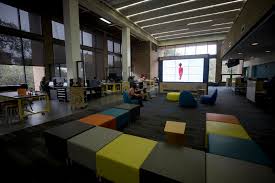
The Fine Arts library, near the stadium. It’s beautiful, it’s got tons of mini art exhibits, and it’s got free 3D printers. The only drawback is that it doesn’t have all that many places to sit!
Seriously, the libraries are great. If you need help finding something, researching something, or have a general question about the libraries, just ask the librarians. They are extremely helpful and happy to assist you.
The Austin public library is also great. It’s down near the river, but you can also download Libby on your phone and check out free ebooks and audiobooks straight to your phone.
Other Resources
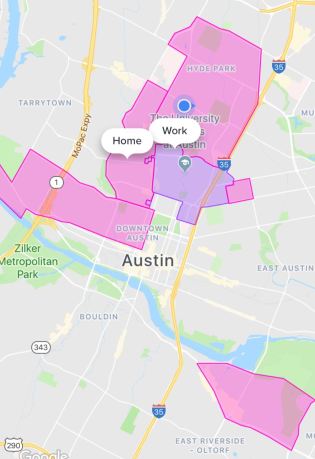
SUREWalk and free Lyft rides. If you’re on campus late and are worried about making it back to your dorm safely, you can call (512) 232‐9255 to order a ride from SUREWalk, a gold cart that will escort you to wherever you want to go on campus (between 8 pm and 2 am). Additionally, UT partnered with Lyft to give students free rides back to common student housing areas (ex. west campus) if they’re stuck on campus late at night. In the photo on the left, the purple area is where Lyft will pick you up, and the pink areas are where Lyft can drop you off.
Every campus dormitory has a free kitchen for which you can check out cooking equipment. However, dorms like Jester are fourteen stories tall and have thousands of students sharing its kitchen, whereas each building in Whitis Court only has thirty students per kitchen.
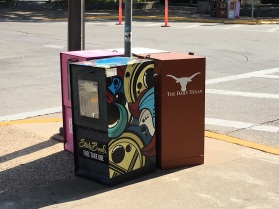
The Daily Texan, the campus newspaper that’s available for free in those little orange boxes you’ll find around campus. The sections are news, comics, sports, life and arts, science and technology, and opinion. However, not every Daily Texan article gets published in print — for all of the articles, see their website.
Wifi. UT has excellent wifi, but you have a bandwidth limit. You can buy more data per week and can look at your data usage here.
The Campus Computer Store, which is a great place to get computer repairs or buy a new device. It’s like BestBuy, but smaller and not incompetent.
The IPhone place on 26th street and Rio Grande. There’s a foodtruck which features a small IPhone repair truck. This is where I went to fix my phone’s screen after an unfortunate incident with a treadmill.
Clowndog Bikes, a bike repair shop on north San Jacinto. It’s not university-sponsored, but they had really good prices, were really nice, and gave me a free light.
Highly discounted Microsoft Office.
The Austin buses have bike racks on the front. If you want to bike somewhere but worry about biking back (due to heat, dark, etc.), you can put your bike on the bus rack. Just be sure to use the little rail to hold it in place!
2. Try to Avoid…
Crime:
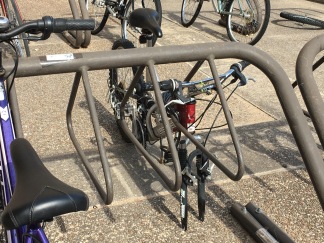
…leaving your bike unlocked. Bike theft is a normal, everyday occurrence in Austin and does happen on campus. It happens on Guad. It happens at gated-in apartment complexes. Taking your bike inside at night is probably overkill (unless you have a $1000 sports bike), but you should always lock your frame and front wheel. Front wheel theft is extremely common.
…GETTING IN A LYFT/UBER/RIDESHARE WITHOUT FIRST CHECKING THAT THE LICENSE PLATE MATCHES THE APP. If someone pulls up to the curb and says they’re your ride, MAKE SURE THEY ARE ACTUALLY YOUR RIDE. While bike theft is the most common petty crime in Austin, human trafficking is the biggest major crime in Austin. Especially for women.
…WALKING ALONE ON GUADALUPE/WEST CAMPUS AT NIGHT. ESPECIALLY FOR WOMEN.“West campus” here is defined as the streets between Guadalupe and Lamar, just west of UT campus proper. This is where I see most of the crime reports through UTPD taking place, from sexual assault to gun violence. You should be fine if you’re with another person/other people, but be aware of your surroundings.
Other:
…Jester City Limits. They may have pointed you here during orientation, but now you should use this only as a last resort. JCL (named after ACL) charges you for every dish ordered, but one floor up is the J2 dining hall, which is an all-you-can-eat buffet. There is really no reason to go to JCL unless everything else is closed.
…the UT Co-Op. Normally, the word “Co-Op” means “cooperative housing.” There are housing co-ops in the area, but I’m talking about the official school store on Guadalupe called “Co-Op.” UT encourages students to get their supplies there, but I do not. The textbooks and supplies are more than full price there, and if you “resell” your textbook to the Co-Op, they’ll give you about 10% of what you originally paid. There are some lab manuals here that you can’t buy anywhere, else, but get all your other supplies online or from an upperclassman. I won’t promote breaking the law, but many students do also own PDF copies of most textbooks for free online. You may get a professor who “requires” the latest edition of a textbook that no upperclassmen have. However, often an earlier edition will still do. Try checking the syllabus for your homework assignments and compare the page/problem numbers in the old edition to the ones in the new edition.
…paying for dining halls with a credit card/cash. UT gives a discount to students who use Dine-In Dollars at the dining halls. If you live off campus and plan on using the dining halls, go online and buy Dine-In Dollars with your credit card, and then use the Dine-In Dollars to get into the dining hall. You’ll save about $3 per meal.
…eating outside. If you eat outside, the squirrels will come for you.
…food lines. Some UT food places (especially in the SAC) use an app called Tapingo, where you can order food online for a variety of restaurants and then pick it up as soon as you arrive in person.
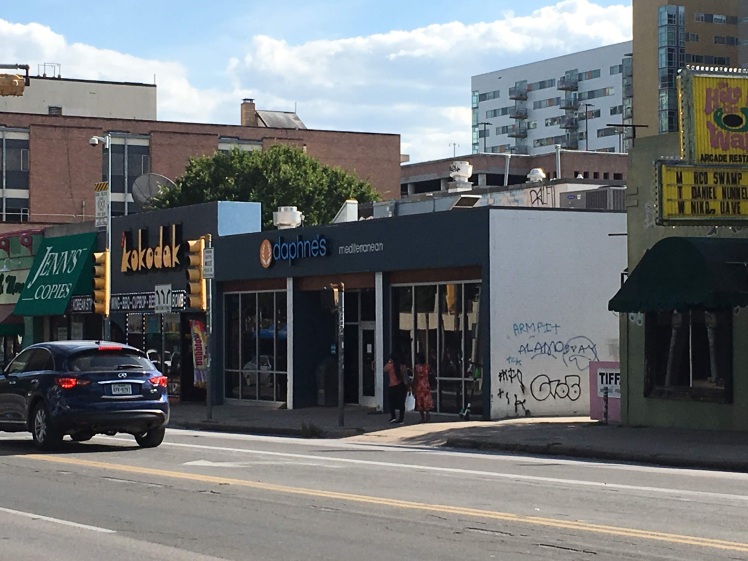
…the Mediterranean place at the intersection of Guadalupe and Dean Keaton. It’s currently called “Daphne’s,” but changes names every couple of months so that people won’t see its bad Yelp reviews. I don’t know how it’s still in business. I assume it’s a rich trophy wife’s pet project.
…the Austin “train.” It is useless and goes nowhere. It is a testament to Austin’s poor public transportation system.
…biking on MLK. There is a bike path there. Do not be fooled. There are 45-degree hills every 3 feet and the cars will run you over.
…entering a large auditorium without a jacket. Always have a jacket with you on campus, even if it’s 105 outside. UT overuses air-conditioning. Keep the jacket in your backpack, tie it around your waist, suffer in it outside, I don’t care. But don’t go to your 400-person physics class in Painter without it.
3. Food
For an exhaustive guide to restaurants and coffee shops around Austin, see HungryMindHungryStomach‘s recent 2-liner guide!
Everyday Food
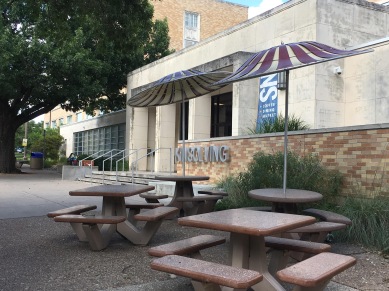
As a freshman, you likely live on campus. If so, you have a meal plan and will mostly be eating at the two buffet dining halls: Kinsolving and J2 (Jester 2nd floor). The food at each hall is mostly the same, but J2 is more crowded, Kinsolving has more vegan options, and J2 has the coveted stir-fry bar. Some people love the dining hall food, some hate it. Either way, it’s convenient and mostly cheap. You can stay in the halls and study to get more bang for your buck, or use one of the Eco-To-Go boxes to take your food to go. Rumor has it that from now on, students living at UT will be allowed unlimited visits to the dining halls, unlike in the past, when you could only afford an average of two meals a day.
O’s Campus Cafe. A bit pricier, but higher quality, grill-style food.
If you don’t live on campus or have a meal-plan, you most likely shop at the HEB on 42nd street. It’s cheap and the bus routes go between there and campus. If you want something pricier but nicer, you can also shop at Central Market in Central Park. If you live on campus and want convenience shopping a bit closer, the CVS on Guadalupe is most likely your place.
Eating Out
Meals:
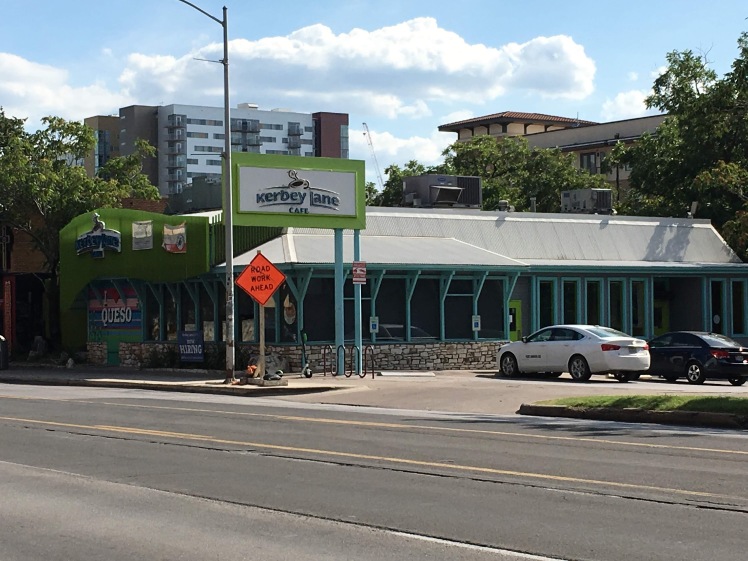
Kerbey Lane Cafe (Guadalupe): Probably the best restaurant around for its pricing. Mostly diner-style, but they also have Tex-Mex and grill items. Open 24/7. Popular place to eat out after a tough exam or midnight cram-session.
Red River Street Cafe (Red River): A cheaper version of Kerbey. The decor and service aren’t as good, but the food is still great and it’s almost never crowded. Best place to go if there’s a long line at Kerbey or if you’re short on cash.
Don’s Japanese Kitchen (Guadalupe): My favorite restaurant. Japanese Bento boxes. Used to be a popular food truck, is now a restaurant.
Mozart’s (Lake Austin Boulevard): Far but fancy coffee and pastry shop. Nice view of the lake. Go around Christmastime to see their lights show.
Cafe Medici (Guadalupe): Serves coffee and some pastries. Popular study spot.
Yard Bar (Burnet Road): Sandwich place with picnic tables, in a park where dogs go to play. They also sell dog treats!
Bouldin Creek Cafe (1st Street): Best vegan food in town.
Teji’s (Guadalupe): Good Indian food.
Patrizi’s (Manor Road): Only decent Italian food for a good price. They own a foodtruck they use as their kitchen, but it’s an outdoor patio with restaurant waitstaff (and electric fans for cooling things down). Dogs welcome!
Austin’s Pizza (Guadalupe): Best pizza I’ve had in Austin for its price.
Titaya’s Thai Cuisine (North Lamar Boulevard): Very good Thai food.
Madam Mam’s (26th Street): Most popular Thai food around campus. Not-too-expensive sit-down restaurant.
Halal Bros (Guadalupe): Most popular halal restaurant near campus. Recently out-competed Halal Guys.
Kismet Cafe (42nd Street, near the HEB): My favorite Mediterranean/halal food place. Excellent falafel wraps, eggplant wraps, and baklava.
CAVA (Guadalupe): A Subway-style Mediterranean place with a large sitting area. Great for going out with friends, and you can order ahead of time online.
Einstein’s Bagels (Guadalupe): Popular breakfast/brunch place.
Raising Cane’s Chicken Fingers (MLK): Fried chicken.
Cain and Abel’s (Rio Grande Street): Great bar and grill restaurant. Has pool tables upstairs.
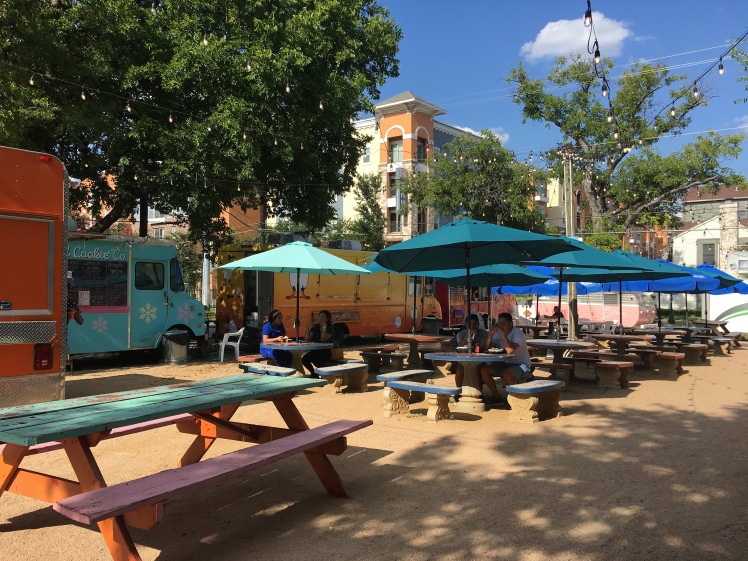
The 26th Street Foodtrucks (26th and Rio Grande): My favorite place to go if you’re with an indecisive group. There’s always something for everybody, from Tex-Mex to stir-fry to “Breakfast All Day” to Brazilian barbecue. My personal favorite is Julie’s Noodles. There’s also an IPhone repair shop and a bong glass blower. People frequently bring their dogs, and there are fairy-lights on at night.
Any tacos: Seriously, any tacos. Torchy’s, Taco Joint, they’re all good. Austin has very good tacos.
Dessert:
Amy’s Ice Cream (Congress): There’s also a location on Guadalupe, but don’t go there. Amy’s Ice Cream is an extremely popular Austin ice cream chain.
Tiff’s Treats (anywhere): A pricey cookie and icecream delivery service. People often order Tiff’s Treats for special events and occasions. I don’t personally like their cookies, but everyone else does.
Gourdough’s Big. Fat. Donuts (1st Street): Absolutely monstrous donuts. They have fried bacon donut sandwiches. If you want to die happy, finish off one of their cream cake donuts (bigger than your head) and let diabetic bliss carry you off into eternity.
4. Culture References and History
To really get a sense of UT’s cultural references, I recommend joining the UT Longmemes for Hornsy Teens Facebook page. It’s actually a fairly decent way of keeping up-to-date on campus news, and it’s hilarious. But people may still reference events that have happened in UT’s history, or in the past few years. Here’s the list of references and history you may come across at UT:
General:
Boil water notice: Last fall, intense flooding caused untreated water to spill into Austin’s reservoirs, putting its citizens at risk of bacterial poisoning. In response, Austinites had to reduce their water consumption and boil their water if possible. UT’s dining halls, gyms, SSB, and Union handed out bottled water to passersby, as well.
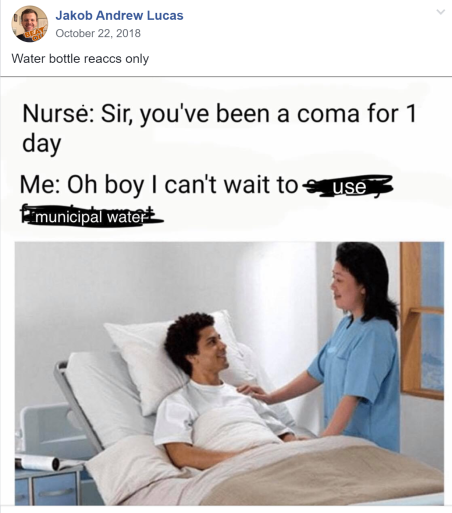
Concealed carry: Many buildings, rooms, and stores around campus will have signs banning those who enter from carrying handguns. This is because, as of fall 2016, it is perfectly legal to carry firearms around campus, so long as the holder has the appropriate license. You may also see many signs saying, “GUN FREE UT.” Few people at UT Austin were in favor of allowing concealed carry, but it was a state-wide law for all public universities, so the rule stayed. However, it is illegal to carry a non-concealed weapon. So if you can see the gun, call the police.
“Cocks Not Glocks”: Speaking of concealed carry… When the law went into effect in fall 2016 (basically the day I set foot on campus), many protesters took to the streets, holding up “GUN FREE UT” signs and handing out free dildos to anyone who would take them. Yes, I said dildos. The protest was meant to point out how odd it was that the Texas legislature was making guns more accessible while making sex toys such as dildos less accessible.
Domino the cat: Domino is a friendly black-and-white cat who lives near Gearing hall. Yes, he will let you pet him if you are nice.
The Annual Israeli Block Party: To be entirely honest, I don’t want to touch this issue with a ten-foot pole, but it’s worth describing here. Every year, a club called Texans for Israel holds a block party, and every year another club called the Palestine Solidarity Committee protests the block party. If you’ve been hiding under a rock for the past seventy years, then you may not know that Israelis and Palestinians tend to have a bit of political beef with each other because of the whole genocide thing. That conflict shows up each year between groups of students supporting either side.
Moojoo’s: Moojo’s is now closed, but used to be a UT-themed ice-cream shop on Guadalupe. They specialized in placing ice cream between two warm cookies to serve as a sandwich.

The albino squirrel: While not technically albino, there are many light-blonde squirrels around campus. Legend has it that seeing an albino squirrel will grant you the power to ace all exams later that day. It is considered proper manners to shoot a video of an albino squirrel and send it to your friends if you get the opportunity, so that they may also share the luck.
“The Eyes of Texas”: “The Eyes of Texas” is UT’s official school song, played to the tune of “I’ve Been Working on the Railroad.” The full lyrics are:
The Eyes of Texas are upon you
All the live-long day
The Eyes of Texas are upon you
You cannot get away
Do not think you can escape them
At night or early in the morn’
The Eyes of Texas are upon you
‘Til Gabriel blows his horn
Yes, those are the actual lyrics. I am not joking. The song’s meaning and origins are somewhat mysterious, but we know that the song was originally performed by actors in a racist minstrel show in the early 1900s. The song is still played by the tower bells every night at 9 pm, and sung as the fight song during football games.
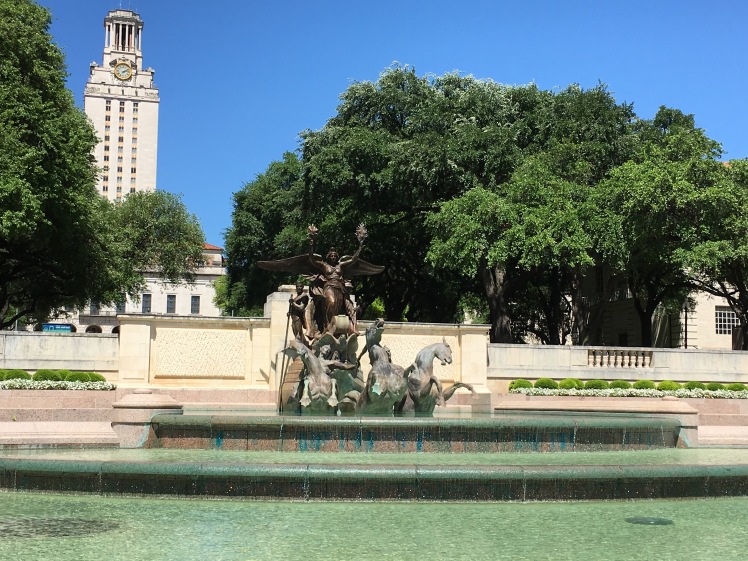
The Littlefield fountain turning purple: UT has a poor history of dealing with professors accused of sexual assault. In protest of this, the school’s communism club decided to dye the waters of Littlefield fountain red and write on the wall behind it, “This is the blood of survivors that UT ignores.” However, it turned out that the university was already dyeing the fountain blue, and so the two dye colors together turned the fountain purple.
Stealing bricks from Speedway: Speedway is clearly distinguishable from other roads on campus because it has brownish-yellow bricks. Those bricks were first lain before my freshman year. However, they were not super hardy, and many started chipping off. Many students stole loose bricks to keep as souvenirs.
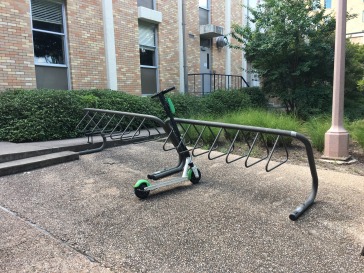
Scooters and Bikers: People used to hate bikers on campus, but now they redirect their hatred towards scooters. Austin bikers are notorious for breaking the law by running through intersections during red lights, riding on the sidewalk, and biking against traffic. However, dockless electric scooter companies recently colonized Austin. These scooters sound an alarm if anyone tries to move them without paying to use them on phone apps. Many riders would leave scooters in the middle of sidewalks, roads, and parking spots. Despite it being illegal, scooter riders would often ride on sidewalks or against traffic in the bike lanes. Austin recently passed a law designating scooter parking zones (typically near bike racks). If you don’t park your scooter there, you can be heavily fined. And yes, they know it was you, because the app says you were the last one to use it. As a rule of thumb: if there are wheels underneath you (bike, scooter, skateboard, etc.), you legally count as a car and must drive on the roads and follow traffic signals. If you are dismounted and walking on your feet, you count as a pedestrian and should not be on the roads.
President Fenves bathing in a tub of money, then turning into Bernie Sanders: In the past few years, UT tuition has steadily gone up. Transcripts went from costing $10 to $20 (though it’s less for Pell Grant recipients). Among the faculty, rumor has it that this mostly goes to bureaucratic costs, and many students started viewing university President Fenves as a tyrannical king taxing his subjects. Hence the “bathing in a bathtub full of money” meme. However, UT recently began covering full tuition (and not just offering loans) for students whose joint family income is less than $65,000 a year. Now, people are comparing President Fenves to Bernie Sanders. And in case you’re wondering, there actually aren’t strings attached to this. This rule covered my tuition for a year. It actually works!
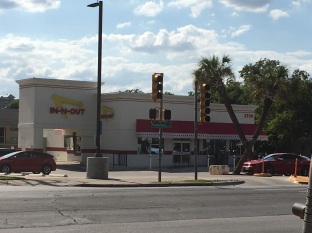
Whataburger vs In-N-Out: The predominant burger chain in Texas has been Whataburger for years, but In-N-Out stores have been popping up in Austin recently. Both Whataburger and In-N-Out have locations on Guadalupe, and there is a feud between students who prefer one chain over the other.
The cookie scandal: The Young Conservatives of Texas club is understandably at a bit of a minority on a liberal campus such as UT. The Young Conservatives more or less dug their own graves by staging a bake sale protesting affirmative action on west mall in fall 2016. They were selling cookies, but how much the cookies cost depended on the customer’s race. The cookies cost more for students whose race negatively impacted their admission to UT (white and Asian students), and cost less for students whose race positively impacted their admission to UT (free for Native American students). Understandably, people were not happy. While the Young Conservatives had aimed to start an affirmative action dialogue, they missed the mark quite a bit: many students mistakenly thought they were saying that students of color were “worth less” than the white and Asian students. And the students that did understand the affirmative action debate simply dug in their heels and yelled at each other.
Sophomore by credit hours: Many students on campus are annoyed by freshman who, when asked for their year, reply, “I’m a sophomore by credit hours.” Freshmen are teased mercilessly for this offense.
The Westminster quarters and carillon: The UT tower does not just play itself. Well, it sort of does. Every 15 minutes, the tower rings the Westerminster quarters, indicating whether it is 15 past, 30 past, or 45 past the hour, depending on how long the chimes last. The tower also tolls the hour. That is automatic, along with the nightly feature of “The Eyes of Texas.” However, you will also occasionally hear completely different songs emanating from the tower. This comes from the school Carillon Club, students who go up to the tower bells and play songs of their choosing. Christmas songs, bell versions of pop songs, and more can all be heard at various times throughout the semester.
Succulents: For some reason, UT students are obsessed with buying succulent plants. Many club fundraisers sell succulents, and there are even some stands that pop up on Guadalupe selling the plants every once in a while. Succulents are extremely easy to take care of and only need watering every month or so. Perfect for lazy college students in a hot climate.
The RLM/PMA dispute: The Robert Lee Moore physics, math, and astronomy building was named after (you guessed it) Robert Lee Moore, a famous physics professor who used to teach at UT. However, he was a confederate-glorifying racist (the name “Robert Lee” apparently wasn’t an accident), going as far as giving lower grades to students of color. There have been recent (successful!) movements to try to rename RLM to PMA.
CLA vs RLP: The College of Liberal Arts was recently renamed in honor of a donor named Robert L. Patton Jr. Many older students will still call it CLA, but on your course schedule and official maps, it’s called RLP.
Stats students asking for interviews: In intro statistics classes, students are asked to collect data and run statistical analyses on that data. So more than halfway through every semester, you will be approached by many stats students asking you to fill out quick surveys, normally around west mall. If you are a stats student, I suggest getting a premade list of data instead of collecting your own, because other students really do not like filling out those surveys. While it isn’t officially allowed by the classes, many students will post their surveys online and often offer rewards in exchange for doing so.
For the tower balls, confederate statues, and canoe statue, see “5. Art Installations.”
Violence:
Sexual Assault Accusations: Unfortunately, UT has a fairly poor history of dealing with sexual assault. These are some of the biggest controversies on UT campus at the moment. Some professors have been accused of sexual assault, and some of them are found innocent. Some are found guilty, either of sexual misconduct or of sexual harassment. The comment section of this article should give you an idea of what’s being said.
I am not nearly well-informed enough to speak responsibly on such heavy issues, but it’s a topic you will run into during your time at UT, as many students change their behavior and who they interact with based on these cases.
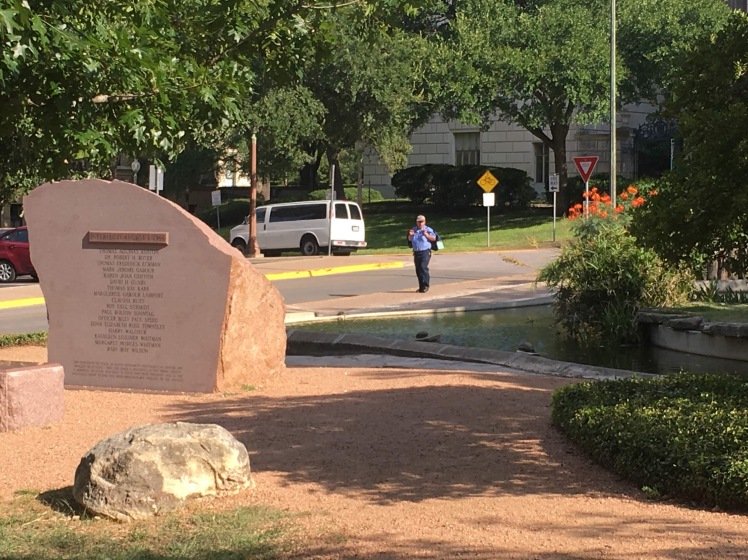
The tower shooting: In 1966, a mentally disturbed ex-student, Charles Whitman, took a sniper up to the top of UT tower and murdered 17 people. It is the most violent and deadly event in UT’s history. People are no longer allowed to the top of the tower, and the school’s turtle pond was dedicated to the victims.
Haruka Weiser: In spring 2016, a freshman named Haruka Weiser was strangled to death while walking home at night. A homeless 17-year-old named Meechaiel Criner was arrested and convicted of her murder. There is a plaque dedicated to Haruka near San Jacinto dormitory.
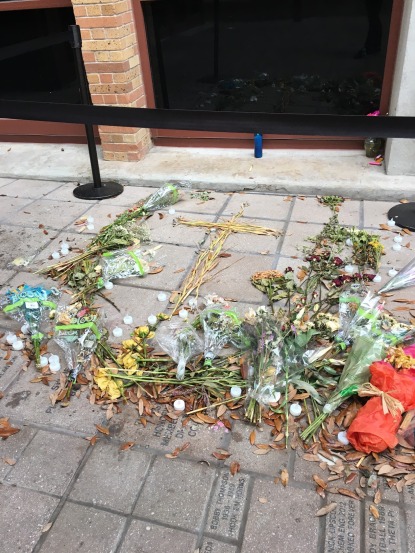
Harrison Brown: In spring 2017, a mentally disturbed student named Kendrix White took a Bowie hunting knife to Speedway and began stabbing people. One victim, a freshman named Harrison Brown, died shortly afterwards. Kendrix White was found not-guilty due to insanity and sent to an institution. There is a plaque dedicated to Harrison along Speedway near PCL, and every May people leave flowers and candles at the spot where he died in front of Gregory Gym (shown left). Many people will not want to talk about this. While the tower shooting happened over 50 years ago, and Haruka was murdered alone in the night, Kendrix White went on his stabbing spree during lunchtime at the most crowded part of campus. Many faculty and current fourth-years were victims, witnesses, or watched paramedics attempt to resuscitate Harrison as he died in front of Gregory Gym. At the very least, all seniors remember the ensuing panic.
At the time, UT police took some time to send out a notice about the case. Students, meanwhile heard and spread rumors about there being other stabbers on campus, two men with guns at Jester, a bomb threat at the Belo bridge, and shootings on west campus. Many even left campus due to rumors of riots scheduled for later that night. Rumors spread that Kendrix and the imaginary others were targeting Greek life, and students instructed each other to hide their Greek letters. While there was a bomb threat on the same day, and an unrelated gun incident west of campus at the same time, these incidents turned out to be unrelated. However, many students swear to this day that Kendrix, instead of being insane, was really a part of an Anti-Frat movement and got off too easy.
The stabbing made national news, and UT’s tragedy suddenly became the center of attention for gun regulation debates. My friends and I were enraged to see conservatives on Twitter suggesting that the Cocks Not Glocks protest prevented UT students from defending themselves against Kendrix (when in fact the protest was unsuccessful, and concealed carry was and still is perfectly legal on campus). Most students I knew just wanted to be left alone, and didn’t want the nation making Harrison’s death into another fight with the NRA.
In response to the stabbing, UTPD began sending out the many timely-notice warnings you still receive every other day. They tell students exactly what is happening with every crime on campus, in order to prevent the sort of panic that happened in the wake of Kendrix’s rampage. Additionally, UT now offers free unlimited group therapy (ex. support groups) in an effort to help the mentally ill on campus (however, individualized therapy still costs you).
“Is UT safe?” Many parents asked this when I was a prospective student in spring 2016. Haruka Weiser had been strangled mere weeks earlier. Older students assured us and our parents that this was a one-off crime by a young man who wasn’t even a student. We hadn’t had an incident in 50 years (it was the anniversary of the tower shooting). Then, almost exactly a year later, the stabbing happened. I’m not going to lie to you: between these and the sexual assault scandals, I genuinely don’t know if campus is safe or not. I feel safe here, even well into the night, on most days. But I most definitely did not feel safe in May 2017. According to the evidence, it’s just a fluke that two freshman were brutally murdered two years in a row. And the UTPD has indeed upped their security, and UT Mental Health services have upped their efforts, as well. Campus has been mostly quiet since then, despite the constant updates from UT police. But we may just have to wait and see if the quiet lasts.
On that cheery note…
5. Art Installations
Statues:
The confederate statues: There is an area of campus called “the six pack,” “south mall,” or “the napping lawn.” It features (you guessed it) a large lawn that is often used for mid-afternoon naps, a statue of George Washington, the Littlefield fountain, and a long view of Congress street reaching all the way down to the Capitol building. There are a few large stone podiums flanking the lawn, where the confederate statues used to stand. The statues have now been removed, restored, and placed in a museum. If anyone ever suggests that putting them in a museum will make them less accessible to people, kindly remind them that a) normal people do indeed go to museums and b) those statues were so covered with algae and pigeon shit that you couldn’t make out who was who when they were on south mall.
The Martin Luther King Jr. Statue and the Barbara Jordan Statue: While the confederate statues were covered in moss and pigeon shit and barely legible, shoved off into small corners of a relatively unpopulated part of campus, MLK and Barbara Jordan got massive courtyards and massive statues all to themselves. I think maybe UT was trying to make up for its racist history. MLK’s statue rests in the middle of east mall near Speedway, and has several friezes depicting important moments of and quotes from his life. Barbara Jordan’s statue is in a round pavilion near the student union, and features many informational plaques about her contribution to civil rights.
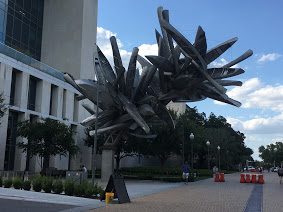
Monochrome for Austin (the canoe statue/boatsplosion): Along Speedway outside of NHB, you will notice a pile of aluminum canoes carefully suspended in the air. While many students initially hate the statue, seeing it as a waste of space and resources, many warm up to it when they realize they can tell people in 100% seriousness that there is a “giant statue of exploding boats” on campus. In fact, after the confederate statues were removed from South mall, a poll on the UT Longmemes for Hornsy Teens decided that the statues should be replaced by miniatures of the canoe statue.
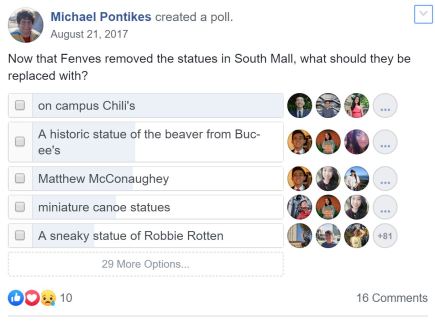
Statue of Diana: In the center of the honors quad, you will notice a statue of an archer with hunting dogs at her feet. This is meant to be Artemis/Diana, and her bow points at Littlefield Dormitory, a female-only, freshman-only dorm, as she forever defends her young maidens.
The George Washington statue: South mall used to have many statues — the confederates, but also statues of former President Woodrow Wilson and Confederacy President Jefferson Davis at the top of the mall. All of these statues were removed for celebrating a legacy of racism, and now only the statue of George Washington remains (unless you count George Littlefield’s fountain).
Other Art:
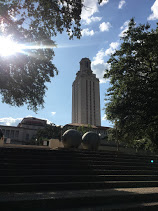
The West (the tower balls): On the east side of Inner Campus drive, you will come across two large metal spheres that look like underwater mines with hundreds of coins welded to their exterior. This art installation is called “The West.” What are they and why are they there? According to UT’s LANDMARKS website:
“For some, the title of the piece implies unchartered territory, while the suggestive shape of the buoys hints at the brute force and masculine energy that is needed to conquer the unknown. The pennies attached to the surface of the sculpture—heads on one buoy and tails on the other—suggest the odds of a great gamble. Like much of Lipski’s sculpture, understanding The West is similar to teasing apart a poem—multiple meanings can be coaxed out and revealed over time.”
Most students, however, only know the spheres as “the tower balls,” because at the right angle, they look like testicles with the UT tower as an erect shaft. At least we can all agree about the “masculine energy.”
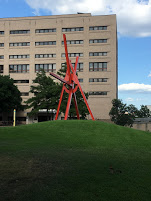
The Clock Knot: “What is that giant orange thing on Dean Keaton?” you may ask. Is it a sextant? Is it a ranch branding symbol? No, it’s just the Clock Knot, which is meant to look different from every angle. Mission accomplished, I guess?
The Color Inside: Atop the Student Activity Center at East mall is an odd white tube. However, at sunrise and sunset, you can go inside that odd white tube and see a color show.
The barn outside the Blanton Museum of Art: If you get a ticket to the Blanton (free for students), you can also go visit the small white barn on the very south portion of Speedway. Inside are several black and white geometric paintings and a large abstract totem pole.
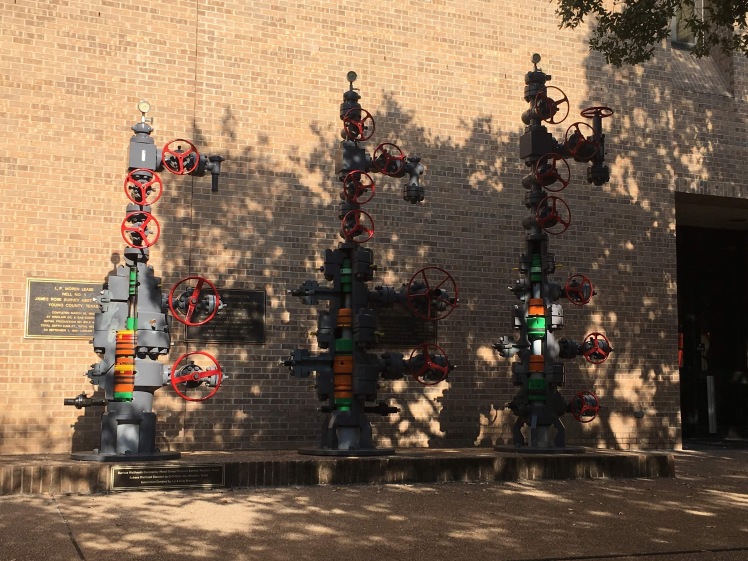
The Chemistrees: I’m not sure if these even have an official name, but along Speedway by the Chemical and Petroleum Engineering building, you will find several large pipes. In the winter, these are decorated as Christmas Trees, and are an official Pokestop.
6. Things to do around Austin
Touristy Stuff:
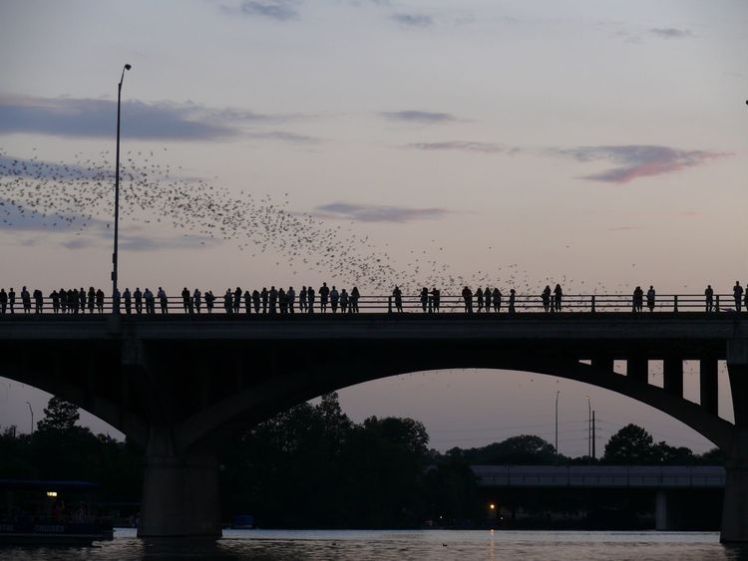
The bats: The one thing everyone wants to do in Austin is to go see the bats who live beneath the Congress bridge. In fact, every evening from 7 to 9, the east side of Congress bridge is packed with people looking over the side and waiting for the bats to fly out. You can stand on the bridge and put up with the asphalt in the summer, or you can set up a picnic blanket on the lawn slightly southeast of the bridge, near the Ladybird Lake trail and the official bat observatory. If you see them from the right spot, the bats should be coming out at a density roughly equal to the wildebeest stampede in The Lion King. If you can’t see them super clearly, wait until everybody else leaves and get a better angle. If you’re ok with only seeing a few bats, it might be easier to simply walk to the UT tower at night, where you’ll be able to see a few of the little guys circling around the tower.
The Capitol: The Capitol building sits in the very center of Austin proper, south on Congress from the university and north from the river. It actually has quite beautiful architecture, informative historical tours, and often holds events out on its front lawn.
Mount Bonnell: Mount Bonnell is a popular hiking destination because it’s the highest point in Austin. It’s surprising, given that Austin is a major city and also in Texas, which has one of the least hospitable climates in the entire country (minus Alaska), but Austin has tons of outdoor activity spots.
Mayfield Park: Mayfield Park is a little hard to describe. It’s got some nice hiking trails, but most people remember it for the peacocks. Mayfield Park’s entranceway is home to dozens of peacocks and peahens, and its inner courtyard features half a dozen koi ponds. It’s an odd park but worth a visit!
The Zilker botanical gardens: This place is like an amusement park for nature. Water features, koi ponds, and, of course, lots and lots of plants!
Graffiti park: Graffiti park is an abandoned construction site, where people go to put up their very best graffiti. It’s my favorite destination on this list, because it’s super fun to climb around the site and pose for pictures in front of the strange works of extremely talented artists. Please note: there aren’t designated paths around this abandoned construction site. If you’re injured or handicapped, you will probably not enjoy this destination nearly as much.
ACL and SXSW: These are once a year, and unfortunately take place in the middle of the semester. Austin City Limits is the biggest live music festival of the year, and you’ll often find UT students showing up to class exhausted because they were up late at a concert the night before. South by Southwest needs no introduction, but does need some caution. All Austin hotels and popular tourist spots become unbelievably crowded during SXSW, and to top it all off, spring break is one week after from SXSW. At least for now, you will almost certainly have to miss schoolwork in order to attend.
Pride: We have our parades very late into the summer, and not during actual Pride Month. The majority of people who go are indeed in the rainbow community, but most of the floats are corporate pandering. Either way, it’s very pretty! Dykes on Bikes, free the nip, men on a rock-climbing wall wearing nothing but thongs, and lots of balloons, glowsticks, beads, and free stuff!
The Trail of Lights: While this only happens during the holiday season, many tourists and local families attend the Trail of Lights. Do you like Christmas? Are you part of one of those families that goes driving around suburbs looking at the increasingly extravagant holiday decorations every year? Well, look no further! Zilker Park’s got you covered with an inundation of Christmas lights, cardboard cutouts of cartoon characters, and toy trains. The Trail of Lights is just what it sounds like. You show up, you spend about an hour walking around a small Christmas village that the people running Zilker have constructed, shop for last-minute holiday gifts, and sometimes there’s live music because this is Austin and why wouldn’t there be live music. Be sure to check their calendar ahead of time to see which nights have free admission!
Nightlife:
If you want to just pick a random bar to explore, 6th Street is still the go-to destination. It’s a dump during daylight, but very lively at night.
4th Street, on the other hand, is the go-to destination for the rainbow community. That being said, rainbow nightclubs like Rain and Highland Lounge often have a fair mix of straight, gay, cis, and trans patrons. Though they get very crowded and rowdy, they’re great places to dance later into the night, and I personally love their light shows and music selections. Cheer Up Charlie’s is a quieter hangout designed for gay women. It’s more of a bar than a club, with food, live music, and a lovely patio.
Vigilante Gastropub and Games: If you’ve read this article in full, you’ve probably gotten the sense that I’m a bit of a gay nerd. You would be correct. That’s why this is my personal favorite bar. They serve you both food and board games (some are free, some cost a fee) and often have drag shows. Great place to go with friends who are either gay or nerdy.
Daylife:
Mueller: Mueller is a recently restored neighborhood north of the campus, and has something for everyone. It has gyms, restaurants, lovely lakes and parks, food trucks, bars, and an Alamo Drafthouse movie theater (Alamo Drafthouses will be where you end up seeing most of your movies, as they’re much closer to campus than most other theater chains).
Ladybird Lake: Ladybird Lake, formerly called “Town Lake,” is a portion of the Colorado River that runs through Austin underneath the Congress bridge. If you want to go hiking, walk your dog, or bike along beautiful trails, Ladybird Lake is your place. Seriously, the trails around this river are endless. There are many spots along the river where people go kayaking, swim with their kids and dogs, jump off small bridges, and just generally have a good time. But bring plenty of water! I have seen heatstroke along that path in the summer.
Farmer’s Market: This isn’t my cup of tea, but lots of my friends go to the Farmer’s Market every Saturday they can. You’ll find freshly made bread, homemade jams and honey, delicious food trucks, gourmet chocolate, and, of course, locally farmed produce.
Buffalo Exchange: You’re a college student, and you have a tight budget. If you’re the kind of person who goes shopping for fun or to let off steam, this thrift store is a hop skip and a jump up Guadalupe. You can also sell here!
The Domain: The local mall. It has mall things.
Lucy in Disguise: A costume shop on south Congress, and probably my favorite place to visit. If you need a costume of anything for any occasion, they have it. It’s pricey, but no one charges you to look around and try on some gladiator helms and wizard staffs.
7. Housing
You should always get housing as soon as possible. UT says it guarantees freshmen housing, but this is a falsehood. If you’re moving off campus, all the good places will be taken unless you sign the lease about nine months in advance.
Dorm Quick Facts:
If you live in a UT dorm, you can get a single (just you), a double (one roommate), or sometimes a triple. Some rooms have communal bathrooms that you share with your floor, and others have adjoining bathrooms. You will also get a “meal plan” (Dine-In dollars you can use at the campus dining halls) and an “Eco To-Go Box” (a takeout container for said dining halls). All dorms now have free laundry, but printing costs money — though rumor has it that the Plan II office and the SAC have limited amounts of free printing. Pianos and the kitchen are free, but often taken. If you sign up for UT housing, you should get an email giving you the option to pick a roommate ahead of time and pick a room of your choice ahead of time. This is ideal, unless you want to play roommate roulette. Jump on this quickly. If you don’t know who to room with, there are Facebook pages dedicated to finding roommates.
For the most part, the dorms don’t allow pets. However, if you get the permission of a therapist, you can keep a pet as a therapy animal.
The Honors Quad: For honors students only or roommates of honors students. Gated-in at night, close to classes, close to Kinsolving dining hall. Littlefield Dorm is for freshman girls only, is the oldest dorm on campus, and is stunningly decorated. Possibly the smallest rooms on campus.
Carothers and Andrews are essentially identical, have slightly larger rooms, include personal sinks but mostly communal bathrooms. Carothers first floor (a boys’ floor), however, will be less private, as that is the public entry building.
Carothers, Andrews, and Blanton are connected to “The Q,” a basement space with a large TV, pool tables, pong table, computers, and a printer. Blanton is like Andrews and Carothers, but it doesn’t have personal sinks or personal thermostats.
Kinsolving: All-girls dorm. Has an exercise room and hosts one of the campus’ two buffet-style dining halls, as well as a coffee shop and a convenience store. Unrenovated rooms.
Duren: More expensive, far from classes. Has a neat courtyard and an exercise room. Close to Kinsolving dining hall.
Whitis Court: Largest rooms on campus, far from classes, close to Kinsolving dining hall. Split into six buildings, each of which houses a close-knit community of a few dozen students. Cold due to communal thermostats. Communal bathrooms, no personal sinks.
Jester East and West: Huge, holds two dining halls and several other restaurants. Renovated rooms. Crowded and loud. Close to classes and the gym. Communal bathrooms.
San Jac: Far from classes, close to athletic facilities such as the stadium.
Creekside: All boys dorm. Close to the Jester dining hall, the SAC restaurants, the gym, and classes.
You can find more info on the dorms here.
Common Off-Campus Housing:
West campus has lots of nearby apartments, but they’re often expensive and loud. West campus is also where the fraternities and sororities have their houses (and thus their parties and drunken midnight wanderings). No housing is as loud as west campus.
Dobie is on the south side of campus. Once again, a little pricey, but conveniently close to campus, a Target, and some food trucks.
The Castilian is that giant building towering over west campus. Pricey, but it has its own dining hall and gym. It’s like a dorm away from your dorm.
Riverside is not pricey, which is why many students live in this gated area. However, it is very far away from campus. There are buses that run from Riverside to UT (and vice versa, of course), but the Austin public transportation system is not always the most reliable.
There are, of course, limitless other places around campus where you can stay.
If you’re going to be living off-campus, I recommend getting a realtor. You just have to give them your check-list and set them loose to find a place for you. They’re also free, because the landlords pay them your first month’s rent as a thanks for bringing in tenants. That way, you can focus on your studies and tour maybe two or three places, instead of searching for things on your own.
8. Jobs
Unfortunately, we’re still at a point where many students have to work and earn money to get themselves through college. Whether you’re just looking for extra pocket change or you’re desperately trying to pay for an education with your blood, sweat, and tears, there’s likely something for you around UT. Here are some of the more common jobs I’ve seen:
UGTA — “Undergraduate teaching assistant.” Yes, not all TAs are grad students. Many classes will hire undergraduates as TAs or graders.
Sanger Learning Center — Do you have skills in a class other people don’t have skills in? You can become a tutor at the SLC.
University Writing Center — Every spring, the UWC offers an internship “course” where students train and work as writing center consultants, helping people with their writing assignments for different classes. The director is a charismatic rhetoric professor.
The Daily Texan — Do you have the hot blood of a reporter? Graphic design skills? Opinions on politics? Try out to join the staff of our school’s newspaper, The Daily Texan.
UGRA — “Undergraduate research assistant.” Even as early as your first semester, you can get involved in a science research lab at UT. Some won’t have space, some pay and some don’t, some offer class credit, some take people with no experience — it really just depends. Research some professors who you might want to work with, either through Eureka or by reading the Science and Technology section of The Daily Texan. Then send the professor a formal email with a professional CV attached. Be sure to emphasize how much their project(s) excite you. Don’t feel disappointed if they don’t have space — sometimes they just filled up their last open position a week earlier, sometimes they just got $10 million in grant money to spend on UGRAs. It depends.
Note: you know how classroom experiences are highly dependent on the professors teaching them? Well, this is even more dependent on the professor. Some want set hours, some will let you come in whenever. Some want 10 hours a week, some want 25. Some pay, some give class credit, some don’t. Some will set you up with a graduate student as your mentor, some will throw you straight into the deep end. Some have taco Fridays, some have poles up their asses. Classes at least have some required standardization, but undergraduate research has none.
RA — “Resident adviser.” There isn’t normally much advising involved. These are the older students who live in your dorm and are basically your sheriffs. RAs handle package deliveries, noise complaints, safety regulations, and occasionally the emotional support of the people in the dorm. As an RA, you would also work with other RAs to arrange dorm events for your students. This position doesn’t “pay,” per say, but it does cut your living cost — if you also have a roommate instead of a single, then your room is free.
Orange Bike Project — Are you handy with tools? Work for Orange Bike Project, UT’s bike fix-up and rental shop in 27th Street Garage. Fix up bikes and tell other people how to fix up bikes.
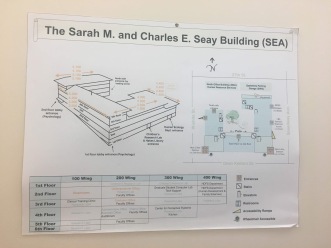
Participate in studies — Again, the amount you get paid (if at all) in these studies varies, and so does the amount of work. I’m putting it here because I landed a study where I fill out surveys and get $20 a week for three years, which is quite a pretty penny. To find studies, look around campus billboards, those kiosks on the street, visit the SEA psychology building on Dean Keaton and read their notice boards, or use the UT events calendar’s research study section.
Summer research internships — While there are all sorts of internships available to students, I unfortunately only know about the science research ones. These internships can be at the university, in the state, in the country, or just anywhere in the world. It just depends on which one you apply to. They typically pay a living stipend, but the amount varies by program and by major. Common sites to apply to are REU, Amgen Scholars, RISE (Germany), and SULI.
If you’re still not sure about what job(s) you might want, check out this link to CNS’ career service sites for each college.
9. A Virtual Tour
It’s time to take a virtual tour of the campus!
The first places you’ll become familiar with are the Flawn Academic Center (FAC) and the Student Services Building (SSB). The FAC has great study spots, a few classrooms, the computer store, and the reason you probably went there this summer: to get your ID. It’s where you’ll be studying and going to vote in March and November. The SSB is far more functional and is basically a small hospital. If you’re on UT’s healthcare (BlueCross BlueShield), you’ll go to the 40-Acre Pharmacy to pick up prescriptions and birth control. Visit the SSB to get both mental health care and physical health care. Studying abroad? You have to go here for a physical. Injured leg? SSB. Group therapy? SSB. Donating blood? The truck is outside SSB, along with free cookies and motivational pamphlets.

Speedway is possibly the most important street to know when attending UT — yes, even more important than Guad. Speedway is the long, straight, yellow-brick pedestrian road that runs north to south from Dean Keaton to the Blanton Art Museum. Speedway connects to the East Mall, the gym, both Jester dorms (and their dining halls), the Student Activity Center (and its restaurants), the PCL library, and many classes you’ll be attending in Welch, the GDC, RLP, the SAC, Jester, and PMA. Speedway is also a great place to join clubs or get registered to vote, as any given weekday will see dozens of clubs trying to persuade you to take their granola bars or fund their bake sales. But be warned: there is no shade on Speedway, and scooters and bikers rarely dismount.
The SAC vs the UNB. UT basically has two student unions: the Student Activity Center (SAC) and the Union Building. The Union, of course, is the official and first student union. It’s mostly used for hosting events in the various ballrooms upstairs, but it also has plenty of restaurants on the first floor, study spaces on every floor (4th floor study spaces are the best, though), study rooms you can reserve, and an underground bowling alley. The Union is at west mall across from the Co-Op (more on that later), but the SAC is at east mall near the MLK statue. The SAC also has restaurants on its first floor, hosts events in its ballrooms, and has study spaces on the first and second floor. Which you go to is really a matter of what you’re in the mood for or which is closer.
The Co-Op. The Co-Op is the large building on Guad titled (not everybody at once) “Co-Op,” and should be avoided as much as possible. It is not cooperative living, but rather an overpriced tourist store. Do not buy their textbooks — get them used from another student — unless absolutely necessary.
Guadalupe. Guadalupe is where west campus ends and the off-campus area informally known as “west campus” begins. There is almost no parking on Guadalupe (either pay on a side-street or try 27th Street Garage), but that’s probably the only thing not on Guad. I mostly visit Guad for the restaurants, but it has everything from clothing stores to tattoo parlors to bars to banks to board game stores. Many of the food places I recommended above (see section 3) are located on Guad. It’s not super safe after midnight, especially for locking up bikes, but it’s a great place to visit with friends during normal business hours.
The six pack/south mall. These six buildings are some of the oldest on campus, and typically hold liberal arts classes and clubs. This is where the confederate statues used to be, in all their algae and pigeon-shit glory. The only remaining statue is George Washington, looking straight down Congress St. towards the beautiful capitol building.
The napping lawn. South mall is the finest mall (mall = lawn/pavilion) on campus, in my opinion, because the grass rarely dies, there are great views, and students love napping here in the sun or shade on a clear afternoon.
Battle Hall. If the six pack buildings are some of the oldest buildings on campus, Battle Hall is even older. Located at west mall near the Union, it was built in 1911 as the university’s first library, and, accordingly to my architecture professor, is acknowledged as one of the top hundred most architecturally impressive buildings in the United States. It’s now the main architecture building, and its library is the architecture library (no food or drink allowed). Look around its exterior at the decorations.
Physics, Math, and Astronomy (PMA). This is the ugly brick of a building located at the intersection of Speedway and Dean Keaton, recognizable also by the enormous flocks of pigeons out front. PMA was originally named RLM for a famous physics professor at UT named (not everybody at once) Robert Lee Moore, known for being so racist as to give students of color lower grades than white student — apparently the “Robert Lee” in his name was no accident. There have recently been campaigns to change the name of this building. Yes, PMA has a tainted history and an ugly exterior, but all experienced upperclassmen know that the interior of the building is actually also quite ugly, not to mention so cheap that desks and equipment break inside on a regular basis. It isn’t an old building compared to, say, Wagner Hall, which is still in good shape — PMA was just built to fit as many classrooms inside as possible, as cheaply as possible. To top it all off, PMA is somewhat confusing at first. The building is over ten stories tall, but the elevators don’t go to floors five through seven (because that would be too much traffic for the elevators). To get to those floors, you must use the stairs or escalators. The fourth floor is the ground floor. “What about floors one through three?” you may ask. Great question! Those floors are underground. What are the perks of PMA? It has a coffee shop, a nice library, lots of empty classrooms for studying in the evening (complete with whiteboards!), and often Natural Sciences Council hosts “star parties” on its roof using the telescope.
The honors quad. Previously the women’s dorms, four buildings box in a small quadrangle (square) on north campus. You can only live in these dorms if you are an honors student or picked an honors student as your roommate. But during daylight hours, you can walk into Carothers or on the lawns, and during business hours you can grab a snack at Littlefield Cafe.
Littlefield fountain and Littlefield home. Neither of which is to be confused with Littlefield dorm. Littlefield dorm is in the honors quad, and is only available to freshman girls. Littlefield fountain is the only fountain currently flowing on campus (I assume to conserve water), situated in front of the George Washington statue between the tower and the Capitol. Littlefield home is an ancient-looking building on 24th and Whitis with an exotic tree in its front yard. As you may have guessed, in the early days UT had a rich patron named George Littlefield — Littlefield home is where he used to live, and was donated to the university after his death. Legend has it that it’s haaauuunted oooooo. It is quite a beautiful building, and that exotic-looking tree out front actually is an exotic tree from the Himalayas. Rumor has it that he had to important foreign soil to keep it alive and healthy.
Anna Hiss gym. This used to be the women’s gym but is now used by engineering and robotics clubs as a workshop. Do not expect to exercise here. However, it has a lovely hidden courtyard just next to MBB.
The stadium. You might actually have classes in the football stadium! Legend has it that the university had to somehow convince the board of regents that the stadium could be used for academic purposes (and not just football). So they added a few classrooms and work-out areas. Viola! You can always see the stadium from many areas on east campus, and if you live at Riverside, you might walk to the stadium every day to catch the bus-stop out front.
The turtle pond. The turtle pond is just barely north of the tower, beside a grassy, tree-shaded lawn. The university dedicated the pond to the victims of the tower shooting, and it’s a popular spot for tourists and students alike to feed the turtles and try to spot the elusive giant turtle (you wouldn’t think something that big would be so good at hiding, but I’ve seen it twice with my own eyes). I’ve seen SnapChat stories where students captured mother turtles laying eggs, many people buy little food pellets to feed the turtles, and I often like to go to the side of the pond and see the baby turtles climbing on the backs of the older turtles. It’s just a gay ol’ time.
Waller Creek. Waller Creek runs along the east side of campus and continues throughout Austin. It’s named for Austin’s first city-planner, Edwin Waller. I informally call it “biohazard creek,” and I would avoid that water if I were you.
The Engineering Education and Research Center (EERC). Aka “the fancy new engineering building.” In stark contrast to its neighbor, PMA, the EERC is one of the most gorgeous buildings on campus. Everything inside and out is shiny, new, and a marvel of architectural engineering. It has both a nice cafe and plenty of great study-spots, either in the library or unguarded classrooms. Additionally, for engineering students it has maker-spaces for things like 3D printing.
Bass Concert Hall. This is where you will go to see all your plays and music concerts.
The Pickle Research Center and The Brackenridge Field Laboratory. Ok, so this one is a little confusing. UT owns plots of land off of the main campus — like really far away. These areas are exclusively dedicated to research, and have no classes. However, you may occasionally hear about an event here or visit for a class/internship.
10. Logistics, Admissions, and Tuition
If you’ve been looking forward to attending UT for a long time, or are just super obsessed with researching the university online, you may already know much of this. However, if you don’t, knowing the information below is extremely important.
Admissions:
It is both extremely hard and extremely easy to get into UT Austin. If you go to a Texas high school and are in the top 6% of your graduating class, then you are automatically admitted to UT. However, this overcrowds the school, making it difficult for even the most qualified of high-schoolers to take the remaining spots available at the university. The Top X% rule exists as a compromise on affirmative action: this way, UT doesn’t explicitly prioritize to minority races or low-income students, but still theoretically allows students in underprivileged towns all over the state to get a quality education. The percentage changes every few years as the population growth of Texas outpaces the growth of university spaces.
However, you will soon notice the problems created by this system. First of all, while the university (especially in research and through honors programs) can offer education on par with that of Berkeley, the drop-out rate at UT is always very high. Secondly, many students admitted by the rule often end up stuck in the “Undergraduate Studies” major. UT has 13 undergraduate colleges (engineering, natural sciences, liberal arts, fine arts, etc.), one of which is Undergraduate Studies. You see, on top of applying to he university, you need to apply to individual colleges and occasionally individual majors. The 13 colleges have no Top X% rule, and so students from underprivileged neighborhoods are often unable to actually major in anything or even get into classes they need to graduate (many classes are reserved for certain colleges or majors). All while still paying tuition and accumulating loans.
I mentioned honors programs and majors that require applications. One popular major in the college of Liberal Arts that requires you to apply before starting your freshman year is called Plan II. Plan II is an advanced liberal arts degree that covers many interdisciplinary topics and famous texts. Another example of an application major is Plan II’s less stringent doppelganger, the Humanities major, which is a create-your-own-degree interdisciplinary major within the college of liberal arts.
UT offers a variety of honors programs and honors degree plans. The entire Humanities major counts as liberal arts honors, which is an example of departmental honors program. Most departments (aka majors) have an honors options: honors psychology, honors computer science, etc. For these, your degree plan will be slightly different, and you will be managed by the department’s honors office.
In contrast, some college have inter-major honors programs. My only experience with these programs are in the college of natural sciences, which has Dean’s Scholars, Health Science Scholars, TIP Scholars, and Polymath Scholars. When applying to such programs, you can have any major in the college, from math to to neuroscience to textiles & apparel. However, you will still have a modified honors degree plan for your specific major.
Honors programs typically give students better resources, advisers, peer support, and class options, but they also require challenging curricula or even undergraduate theses. Additionally, each inter-major honors program has a unique focus you should take into consideration if you want to apply. For example, Health Science Scholars is geared towards students planning on attending medical school, whereas Polymath Scholars focuses on branching out and taking more liberal arts classes. As yet one more consideration, some programs are better funded and better established than other programs. For example, Dean’s Scholars was established decades ago, has more alumni to network with, and gets far more funding from the College of Natural Sciences than any of the other programs — whereas Polymath Scholars is less than a decade old and still getting its footing, alumni, and funding.
Tuition:
You will have three main types of cost in college: tuition, living expenses, and supplies. Tuition is the cost of taking your courses and paying your professors. This means that the more classes you take, the more your tuition will cost. This class fee also varies from class to class and college to college. Additionally, tuition costs more during the summer, which is why many students take summer classes at Austin Community College and then transfer the credits over to their UT degree (I did this with a government class).
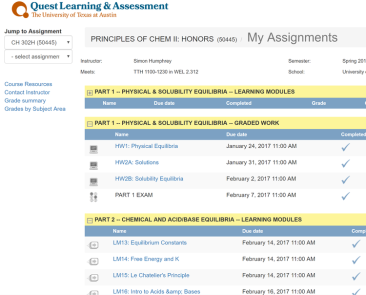
Living expenses include rent, food, and utilities. This will vary based on where you live, how many roommates you have, and how much electricity/water/internet you use. Supplies are the invisible costs that really hit students hard, but have a lot of wiggle-room. Supplies counts things like textbooks, art supplies, online programs such as UT’s infamous Quest learning system (you will hate Quest), and classroom help tools like iClickers and Squarecap (which teachers use to electronically ask multiple questions during class). You can lower these costs by buying used supplies or buying four-year subscriptions to certain services. And, of course, avoiding the Co-Op.
I’ll also say a little bit about financial help. First and foremost, UT now covers all tuition (not living expenses and supplies) for students whose family income is under $65,000 a year. And no, this is not loans. There is no catch. This covered my family for a semester or two, and it is fantastic. Of course, this should be included in your yearly FASFA application. By the way, sometimes FASFA will ask for last year’s annual income, but sometimes it asks for the previous year’s. If one of these is inconvenient for you, you can contact them and make an appeal explaining your real financial situation. For example, if your family’s income was $100k in 2017 but dropped to $60k in 2018, so you want to count 2018 for our FASFA instead of 2017.
If your income is very low, you can also apply for national help programs such as a Pell Grant, or get student loans from the university. There are also an endless supply of competitive scholarships you can apply to as a student. Some are from independent organizations, some are university-wide, and some are specific to your college. Each has different requirements and intentions. Some require a specific major or career-path (ex. medical school), some require a minimum GPA, some require essays, and so on. Personally, I’ve never successfully gotten one of these, but if you have lots of spare time to apply, they can’t hurt. You should get an email from your college every so often inviting you to the “Common Scholarship Application” portal online. Start early, because you might need rec letters (always ask for rec letters three weeks before you need them, because your professors are busy people).
Other Logistics:
First of all, midterms are not midterms. To many people, a “midterm” is a big test you take halfway through the semester, and there is only one per class. Not so at UT. Here, a “midterm” is any test/essay that is not a final. I’ve had one class with only one midterm, I’ve had some with four midterms scattered throughout the semester, and I’ve had dozens with three evenly spaced out. Often, this allows professors to drop your lowest exam/essay grade, or allows them to say, “If you get As on all your midterms, you can skip the final.” To find out how many midterms a class has, take a look at your syllabus.
For the most part, finals are offered during the finals period — though occasionally you’ll get a professor who has their final essay due before this time in an attempt to ease your finals load (this only works if all your other professors don’t do the exact same thing -.-). Classes and the finals period are separated by the “dead days,” two days where no one is allowed to offer classes or final exams. It’s typically a Monday and Tuesday in December/May where everyone on campus studies as much as possible for their first exam. Often, the university holds morale-boosting events during this time, such as pancake-days or therapy dog sessions.
What even are grades? Classes are highly personalized, so some are graded on a bell curve, some professors have an 85 or a 93 as their cut-off for an A, some professors won’t tell you any of your grades until the end of the semester, etc. If you’re passionate about getting or avoiding a particular grading system, then read the class syllabus beforehand–it’s required to detail the class grading system in the syllabus. Based on whatever system the professor has, you are assigned a letter grade at the end of the semester. That letter grade affects your GPA as follows:
A: 4 grade points, A-: 3.67 grade points
B+: 3.33 grade points, B: 3 grade points, B-: 2.67 grade points
C+: 2.33 grade points, C: 2 grade points, C-: 1.67 grade points
D+: 1.33 grade points, D: 1 grade point, D-: 0.67 grade points
F: 0 grade points
The number of hours in a class also affects your GPA. For instance, if you take M408D and get a B, you receive 3 x 4 = 12 grade points (3 for getting a B and 4 hours in M408D). If you also took BIO206L that semester and got a C, you receive 2 x 2 = 4 grade points (2 for getting a C and 2 hours in BIO206L). These two classes put your semester grade points at 16 points (12 + 4). Divide that 16 by the number of hours you took (4 + 2 = 6) and you’ll see you have a 2.67 GPA, a B- average.
Now, how did we know that M408D was 4 hours and BIO206L was only 2? It’s standard practice at universities to title courses informatively, and at UT you can tell how many credit hours a class will give you based on the first number in the name. M408D has a 4, so it’s 4 hours. The next two numbers normally indicate where the class sits in a sequence. So instead of having the stereotypical “Chemistry 101,” you might have “Chemistry 301” or CH301. The first few letters that come before the numbers indicate what department the class is in. “CH” is for chemistry, “Bio” is for biology, and “M” is for math. Sometimes there will also be a letter after the numbers. If that letter is an “L” (ex. BIO206L), then that class is most likely a lab.
It doesn’t say this on your course schedule, but UT holds the standard practice of letting classes out ten or fifteen minutes early so that students can get to their next class on time. On Monday, Wednesday, and Friday, UT typically has hour-long classes which let out ten minutes early. On Tuesdays and Thursdays, UT typically has hour and a half-long classes which let out fifteen minutes early. If a professor tells you this is a convention and not a rule they have to uphold, they are full of shit. If your next class is still too far away to make on time, talk to the two professors. At least one of them is likely to not be an asshole, and they will let you leave early or arrive late.
Your freshman registration is, unfortunately, your easiest registration. You meet with your adviser, register at the same time as everyone else in your year, and most of your classes are too low-level for any upperclassmen to compete with you. After your first semester, you will need to look up your registration information sheet, which lists all of the dates and times you’re allowed into the registration portal online. These periods can last from weeks to individual days, so be sure to understand them well.
What determines these dates and times? How much of your degree plan you’ve completed. This ensures that freshmen, who will have a lot more chances to get the classes they need, register last, while seniors register first so they can be certain of graduation. But this isn’t just by year. If your friend is 50% done with their degree and you are only 46%, you will register a few hours or a few days after them. You can check your completion percentage using UT’s Interactive Degree Audit 2.0. These are instantaneous. In summary, be sure to claim your AP and transfer credits early! But don’t claim any credits that don’t count towards your degree plan (ex. if you don’t need a foreign language), because the transfer costs money.
UT has started the First Year Interest Groups (FIG) program, which pairs you up with half a dozen other freshmen in a similar major and has you take many of the same classes. UT is trying to give you automatic friends, because making friends in college is hard. I haven’t met any students for whom this actually worked out, but who knows? Maybe it’ll work for you. See the “Tips” section below to see how to make friends in college.
UT lets you pick your roommate and your room ahead of time (priority given to upperclassmen). You can always play the roommate lottery — it worked out for me. Otherwise, pick a roommie and reserve a room as soon as you get the email allowing you to do so. Repeat yearly.
UT doesn’t have an official “shopping” period for classes, but you can add or drop classes freely until the twelfth class day several weeks in. Afterwards, you can drop the class using one of your six allotted Q-drops, which will not affect your GPA. However, if you still need that class to graduate, then you’ll have to take the class again. Plus, there is another deadline for Q-dropping. But among those six Q-drops is a single One Time Exception, which you can use pretty much anytime during the semester. Late November and you want to drop the class? You only get one chance to do that.
Pass/Fail classes typically don’t count towards your degree plan, but they can be fun if you have spare time. If you audit a class, you aren’t technically registered for it at all, but you will still get access to the course’s Canvas page and other materials.
Sometimes a seminar will put you over the hours limit. You need to gain expressed permission from your college to take more than 18 hours in a semester. Taking 18+ hours is doable, especially if they are low-workload classes.
11. Tips
Where is a good place to study? Nearly everywhere. If you can’t find a good study spot, you aren’t trying hard enough. The libraries alone should be enough, but a few of my favorites include: empty classrooms, especially the ones with whiteboards in PMA and RLP, the “graduate” study spaces in GDC, the upper floors of Burdine, the dorm study rooms, the third and fifth floors of NHB, the fourth floor of Burdine, the “Old Library” on the fourth floor of Welch, the FAC, your current workplace, the EER, and the Foundry/Makerspaces.
One student made an interactive map of campus study spots, indicating the presence of outlets, quiet spaces, printers, coffee shops, etc.
DON’T PUT YOUR HAPPINESS ON HOLD FOR TOO LONG. Don’t wait to do something fun or make memories. Life is hard. Life does not get easier, but you can get better at handling it. Do what you love now, do what is fun now, explore the world now. You will not have more time in grad school/at your first job. You will not have more time once you get married. You will not have more time next semester. Life isn’t about “having” time, it’s about “making” time, and how good you get at it. If you like dancing, go dancing on Friday nights. If you like reading, read during lunch every other day. If you like gaming, give yourself a half hour to game every morning, or after each exam. If you like exploring, go to a new museum or restaurant every other weekend. You’re supposedly here because you’re a harder worker who knows how to delay gratification. Great! Now stop delaying gratification.
Talk to professors. Seriously, talk to them. They’re just older, nerdier versions of you, and some are more scared of you than you are of them. Go to their office hours. Email them about a cool article. Sit in the front row of class (this will also help you stay awake) so they remember your face. Ask their advice. Ask to join their lab. Ask for career advice. They enjoy helping students. That’s why they took a low-paying job in academia in the first place. The more you interact with professors, the more you can learn about opportunities or secure letters of recommendation.
As for letters of recommendation, try to have three professors you’re certain will write you a letter, at least two in your major/area. Especially by the time you graduate. Be sure to always ask a professor for their rec letter at least three weeks in advance. They are busy people and will often say ‘no’ if you ask too close to the deadline. TAs can also give out rec letters, but carry less clout.
To make friends, say hi to your neighbors, say hi to the people sitting on either side of you in class (preferably ASAP, otherwise it’s just kind of awkward introducing yourself three months into the semester), start conversations with your roommates and neighbors, and/or join clubs. You are a friendless freshman surrounded by other friendless freshmen — they are thinking the exact same thing as you and won’t think it’s weird that you’re saying “hi.” People make friends by proximity, so befriend the people you already spend lots of time with.
Learn to have fun exercising — sports, dance, gym buddies, archery club, etc. Download audiobooks/podcasts and take a walk around campus. Bike to work instead of taking the bus. Watch Netflix on your phone while on the treadmill at Greg. Play some solo racquetball in between classes. Dance to music in your dorm room. Just do something. Walking to and from class is not enough, even if it is uphill. The habits you form now will follow you for the rest of your lives, and the freshman fifteen is real.
If you live off campus and need to feed yourself, invest in meal-prepping. The oven is your friend, because you can leave shit in there, walk away for 30 minutes, and then come back to collect your food. Unsure if something can be frozen and stored for later? The answer is probably yes, no matter what the internet tells you.
Wait until a few days into class (or ask upperclassmen) to see if a class really needs a textbook. Some professors will say a textbook is required and then never use it. Other classes will stick to the book like glue. Additionally, even if the professor says otherwise, an older edition of the same textbook normally suffices, with slightly different page numbers.
Make a class GroupMe early on in the semester. Start a groupchat and pass your phone around the class, or ask the professor’s permission to post a link on the Canvas page. This is great for finding study partners and getting homework help/class notes.
Bikes are legally cars if you are mounted, pedestrians if you are walking it. It is illegal to bike on the sidewalk and perfectly legal to bike on the road if there is no bike lane. As a rule of thumb, if there are wheels underneath you, you count as a car — skateboards, scooters, bikes, “hover” boards, unicycles, etc. Well, not wheelchairs, but I have seen a man in an electric wheelchair in the bike lanes before.
Build up a repertoire of study strategies. You may be excellent at studying now, but your schedule changes every semester and your workload changes every month. It is a volatile time. Your strategies need to change with it. Make a list of strategies (ex. study for fifty minutes and then a ten minute break, alternate readings/practice problems every half hour, eat a lollipop each time you finish a task, watch an episode of Game of Thrones every day you study for a test ahead of time, etc.). It’s good to have backup plans for when your current one stops working.
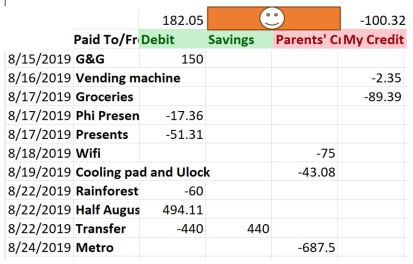
Keep a spreadsheet of finances. Keep every receipt you ever receive and add it to the spreadsheet each week. This will help you track what you’re spending too much on, allot certain amounts of money towards leisure vs living expenses, track how much of a scholarship you have left, etc. If you update it every weekend, it’s not difficult.
To stay healthy, do the things everyone keeps telling you to do. You know how long you’re supposed to sleep, what you’re supposed to eat, and how much you should exercise. You just don’t do it. The advice isn’t going to change, so stop waiting to hear different advice than what your doctor keeps telling you.
For cheap travel to and from nearby major cities (Dallas, Houston, etc.), many students take the Megabus. It can get unpleasant and crowded after a few hours, but it’s not the worst way to travel. It basically feels like an airplane.
Your optimal mode of transportation depends on the distance you need to travel. If you’re going between classes or from a dorm to somewhere else on campus, then odds are walking or skating will be optimal. But it would take too long to park a bike or drive through the hoards of pedestrians. Biking is preferable to driving for longer distances (under like a mile) because it’s incredibly difficult to find parking in Austin. Buses are often preferable to cars for this same reason. Basically, don’t bring your car here. Some people do, and I will never understand those people, because buses or Lyfts will almost always take less time/stress/money than maintaining your parking fees.
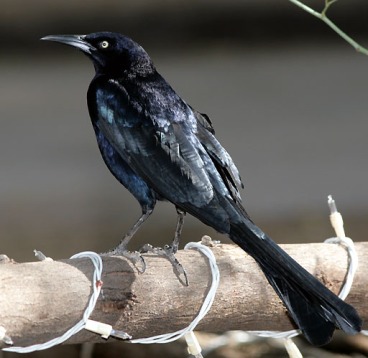
Those black birds you keep seeing that look kind of like crows and make really weird sounds are called grackles. The females are the slightly smaller brown ones.
Four p.m. is the hottest time of day. Do not go outside at this time in the summer without water. I’ve already had to call an ambulance for a man with heatstroke and throw my water onto an overheating German Shepherd this summer. Don’t be an overheating German Shepherd. Bring a water bottle.
Always bring a jacket to campus. Public Texas buildings crank up the AC way too much, and those big auditoriums get very cold very quickly. Keep it in your backpack, tie it around your waist, I don’t care just bring it.
If you get a bad professor, get help from your TA. If you get a bad TA, turn to a friend in class. If you have no friends or they are equally confused, open up your textbook. If your textbook is unhelpful, get tutoring privately or at the Sanger Center. If you can’t find a good tutor, then you are fucked.
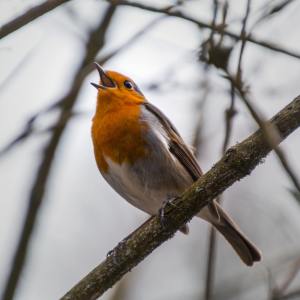












Thank you so much Robin!! I’m an incoming freshman and this seriously relieved a lot of the uncertainties I had about UT :))
LikeLiked by 1 person
You’re welcome!
LikeLike
This is so thorough! A blessing for any new student. This should be readily available to students!
LikeLiked by 2 people
Thanks!
LikeLike
This is fantastic!! I’m a graduate student but also found this helpful, thank you so much.
LikeLiked by 1 person
You’re welcome!
LikeLike
Excellent! You should be selling this.
Sent from Yahoo Mail for iPhone
LikeLiked by 1 person
Thanks!
LikeLike